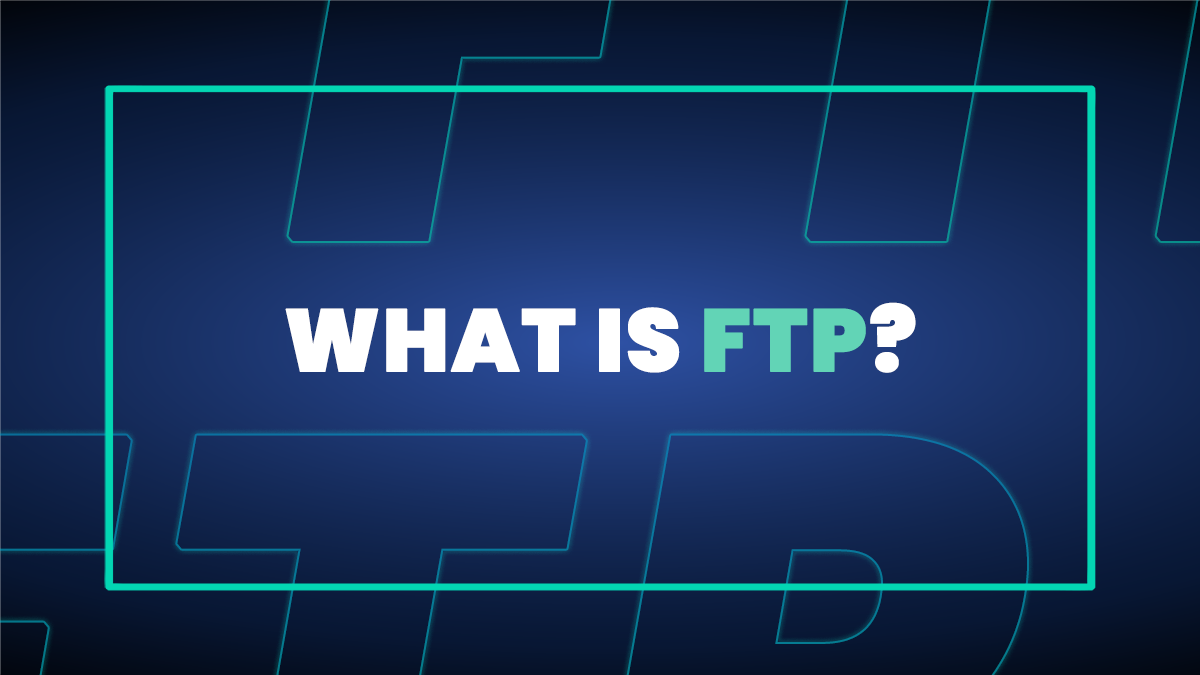Which Protocol Used to Upload a File to the Server Is
What is File Transfer Protocol (FTP)?

Almost people know or accept a decent understanding of what File transfer protocol ( FTP ) is. The word is oft thrown around as a blanket term for file transfer…which is not the example. So, what is file transfer protocol exactly? How does information technology piece of work and how do people use it? We offer these answers beneath.
- What is File Transfer Protocol?
- How Does File Transfer Protocol Work?
- How to Use File Transfer Protocol?
- Types of File Transfer Protocol
- The Evolution of File Transfer Protocol
What is File Transfer Protocol?
File transfer protocol is a network protocol used to transfer files between computers on a Transmission Control Protocol/Internet Protocol (TCP/IP) network. In other words, the internet (but not ever).
There are all kinds of paid and open-source FTP options available. 1 of the longest-running FTP services, FileZilla, is an open-source application built in 2001.
Fun fact: FileZilla was conceived as a computer science class project .
FTP is extremely well established as a file transfer method. Information technology'south been the tool of choice for years for many web developers deploying or updating websites. However, this method has slowly fallen out of favor with the rise of elevate-and-drop, WYSIWYG-style spider web editors.
But FTP's long history also means it has become somewhat…outdated. Many observers say FTP is an antiquated technology well by its best before date.
And when you consider that the showtime-ever File Transfer Protocol, RFC 114 , was written past then-student at MIT, Abhay Bushan in the Spring of 1971, they may have a indicate.
Regardless, FTP remains in apply around the globe every bit a method of transferring files and data.
How Does File Transfer Protocol Work?
Considering FTP is a client-server protocol, a sender must first upload files to an FTP server. The server typically requires login credentials, although some FTP servers allow anonymous logins.
The FTP server is essentially the hub, or midpoint, of the file transfer. After logging in, the file recipient must download information from the same server. In one case logged in, users have the power to perform a number of deportment, including uploading and downloading files but also deleting, renaming, or moving them.
FTP uses both a command channel (for commands and responses) and a information channel (for information transfer).
An FTP session runs either in passive or agile mode. Agile mode ways the user proactively requests to make changes to the server, with the server creating a connection dorsum to the user's calculator. Equally a upshot, this process that can crusade issues with firewalls. Passive mode FTP transfer gets around this by relinquishing all command to the user's reckoner.
How to Employ File Transfer Protocol?
FTP is typically used in one of three ways :
- Command-line FTP (accessed through the command prompt in Windows or Terminal for Mac)
- Through a web browser
- Via an FTP client.
The latter is by far the most common method used today, with several FTP clients on the market such as the same FileZilla, along with Cyberduck, WinSCP, WS_FTP, Transmit, and CrossFTP.
However, FTP isn't usually considered a secure protocol. It doesn't use encryption and typically uses clear-text usernames and passwords. This leaves FTP servers dangerously exposed to spoofing, brute force, and other rudimentary cyberattacks.
Newly updated versions of FTP (mentioned beneath) practise include encryption, just the engineering is still considered a " security hole " by many IT experts. FTP connections are also notorious for running into frustrating and time-consuming firewall difficulties.
Because installing and using FTP servers requires certain technical skills , it'south also generally a much more than time consuming (and potentially frustrating) feel for everyday users compared to simplified drag-and-driblet file transfer SaaS tools.
Related:Information Theft: How Hackers Can Steal Your Files Remotely
Types of File Transfer Protocol
Several types of FTP exist, including:
| FTP type | Description | Port |
| Anonymous FTP | Bones FTP without requiring a username or password, and without encryption. | |
| Password-protected FTP | Basic FTP that requires a username and countersign. | 21 |
| FTP Secure (FTPS) | Also known as FTP-SSL (FTP Secure Sockets Layer), FTPS allows implicit Transport Layer Security (TLS)-enabled connections for better security. | 990 |
| FTP over explicit SSL/TSL (FTPES) | Allows explicit TSL connections. | 21 |
| Secure FTP (SFTP) | Technically not an FTP protocol, SFTP is an encryptable offshoot of Secure Vanquish protocol (SSH) adult by the Internet Engineering science Task Strength (IETF). | 22 |
Several different data types are transferred using FTP, including ASCII (Type A) for text data, Image (Blazon I), and EBCDIC (Type E) for plain text.
The Evolution of File Transfer Protocol
Equally mentioned upwardly acme, FTP starting time came about in early on 1971. Information technology was designed to ship files over Avant-garde Research Projects Agency Network ( ARPANET ) in the U.S., 1 of the commencement-always public networks (and forerunner to the internet) launched in 1969 and decommissioned in 1989.
One time the internet went mainstream FTP needed several revisions to ensure information technology worked with TCP/IP: RFC 765 was launched in 1980, and RFC 959 came out in 1985, both of which added new capabilities. RFC 959 emerged in 1997 to improve security, and RFC 2428 appeared in 1999 to handle IPv6.
In the concluding few years, still, FTP has seen itself fall out of favor in some quarters. Google removed support for FTP file transfer with the release of Chrome 88 in early on 2021. Information technology would've been even earlier but the pandemic forced a filibuster.
Video Explainer
Y'all Can Utilise MASV Instead of FTP

MASV is an splendid alternative to FTP for those looking to transfer huge files without the hassle of managing an archaic FTP server. Not to mention configuring firewalls and finding people with the knowledge to use FTP efficiently.
MASV allows any user to kickoff sending files inside 60 seconds of login. It has the technical complexity of sending an email. That means you lot don't have to sit through tutorials or preparation to use MASV to send huge files of upwardly to 5TB. Plus, because MASV follows Trusted Partner Network security and compliance standards, you can confidently utilise MASV as a faster, more robust, and way more than secure alternative to FTP.
MASV knows how easily data transfer can be compromised. It's why we've built our transfer solution from the ground up with security in mind.
Sign up today and get 100 GB of free data to transfer in our free trial.
Source: https://massive.io/blog/what-is-file-transfer-protocol-ftp/
0 Response to "Which Protocol Used to Upload a File to the Server Is"
Postar um comentário